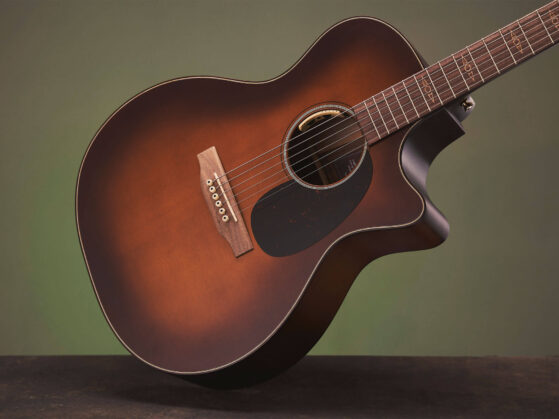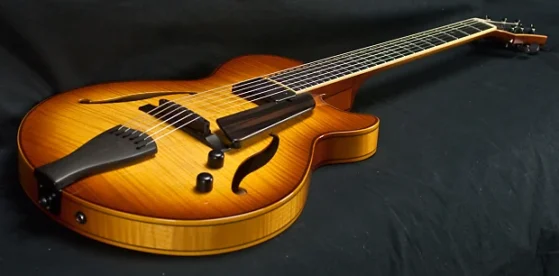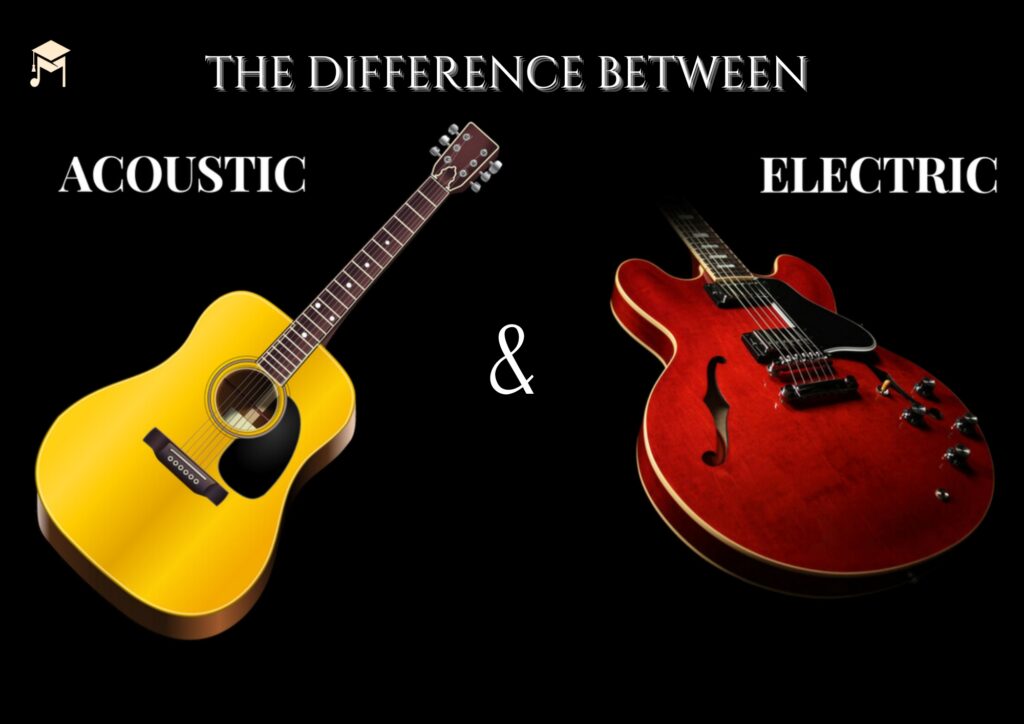What is the Difference Between Acoustic Guitar and Electric Guitar?
Guitars are among the most versatile and popular musical instruments globally, enjoyed by musicians across various genres. Among the many types of guitar, acoustic and electric guitar stand out as two of the most commonly used. While both instruments serve the fundamental purpose of making music, they differ significantly in design, sound production, playing style, and application. Understanding these differences can help aspiring guitarists make informed choices about which instrument to pursue based on their musical preferences and goals.
Construction and Design
Acoustic Guitar: The acoustic guitar is traditionally constructed from solid wood or laminated materials, featuring a hollow body that allows sound to resonate. The primary components of an acoustic guitar include:
- Top: Typically made from spruce or cedar, the top contributes significantly to the instrument’s tone.
- Back and Sides: Often constructed from mahogany, rosewood, or other tonewoods, the back and sides affect the guitar’s volume and resonance.
- Neck: The neck houses the fretboard, usually made from rosewood or ebony, where players press the strings to create different notes.
- Sound Hole: Located on the body’s top, the sound hole amplifies the sound produced by the vibrating strings.

Electric Guitar: In contrast, the electric guitar typically features a solid body, although semi-hollow and hollow body options exist. The key components of an electric guitar include:
- Body: Made from various types of wood (such as alder, ash, or mahogany), the solid body design minimizes feedback and allows for a range of tones.
- Pickups: These electromagnetic devices convert the vibration of the strings into an electrical signal, which can be amplified. Electric guitars usually have one or more pickups, influencing the sound and tone.
- Neck and Fretboard: Similar to acoustic guitars, but often with a different profile or scale length to accommodate various playing styles.
- Bridge and Tremolo System: The bridge on an electric guitar can vary, with options for tremolo systems that allow players to bend the pitch of notes.

Sound Production
Acoustic Guitar: Sound production in an acoustic guitar is purely mechanical. When a player strums or plucks the strings, they vibrate and transfer this vibration to the guitar’s body. The hollow design amplifies the sound naturally, creating a warm, rich tone. Acoustic guitars are often preferred for fingerstyle playing, folk, country, and classical music due to their organic sound.

Electric Guitar: Electric guitars rely on pickups to capture string vibrations and convert them into electrical signals. This signal is then sent to an amplifier, which boosts the sound. Electric guitars can produce a wide range of tones and effects, from clean and bright to heavy distortion. The ability to manipulate sound through effects pedals and amplifiers makes electric guitars suitable for rock, jazz, blues, and many contemporary genres.

Playing Style and Techniques
Acoustic Guitar: Playing the acoustic guitar generally involves a more traditional approach, often featuring fingerpicking, strumming patterns, and open chords. The instrument is typically played unplugged, emphasizing its natural sound. Due to its portability and self-contained amplification, the acoustic guitar is popular for solo performances, campfires, and intimate gatherings.

Electric Guitar: Electric guitarists often employ techniques that take advantage of the instrument’s amplification capabilities, such as bending notes, using vibrato, and employing various effects. Players may also use techniques like palm muting and harmonics to create unique sounds. The electric guitar’s versatility allows it to fit seamlessly into a band setting, where it can be blended with drums, bass, and vocals.

Tone and Versatility
Acoustic Guitar: The tone of an acoustic guitar is typically characterized by its warm, resonant qualities, which are influenced by the type of wood used in its construction. Different playing styles, such as fingerpicking or flatpicking, can also produce varying tones. However, the acoustic guitar has limitations regarding sound alteration compared to its electric counterpart.

Electric Guitar: Electric guitars offer a broader range of tones and styles due to their reliance on electronic components. The choice of pickups, amplification settings, and effects can dramatically alter the sound, allowing for infinite customization. This versatility makes electric guitars suitable for a wide array of musical genres, from hard rock to jazz fusion.

Applications and Genres
Acoustic Guitar: Acoustic guitars are widely used in genres like folk, country, blues, classical, and pop. They are often chosen for singer-songwriter performances, where the focus is on vocals and lyrical storytelling. The instrument’s rich, full sound complements vocal melodies beautifully.
Electric Guitar: Electric guitars dominate genres like rock, metal, punk, and jazz. They are essential for creating powerful riffs, solos, and intricate harmonies. The ability to manipulate tone through effects and amplifiers allows electric guitarists to explore a vast range of musical expressions.

Learning Curve
Acoustic Guitar: For beginners, the acoustic guitar may be easier to start with due to its straightforward nature and the immediate feedback it provides. Players can quickly learn basic chords and strumming patterns, making it an accessible choice for new musicians.
Electric Guitar: While electric guitars can also be beginner-friendly, they often require additional equipment, such as amplifiers and effects pedals, which can complicate the learning process. However, electric guitars allow for more advanced techniques and experimentation, making them appealing to those looking to explore various musical styles.


Maintenance and Care
Acoustic Guitar: Acoustic guitars require regular maintenance, including changes of strings, humidity control, and occasional professional setups to ensure optimal playability. Wood can be sensitive to temperature and moisture, so proper care is essential.
Electric Guitar: Electric guitars also require string changes and setups, but they might need more attention regarding electronics and components. Regular checks of the pickups, wiring, and pots are important to ensure optimal performance.


Conclusion
In summary, the choice between an acoustic guitar and an electric guitar ultimately depends on personal preference, musical style, and goals. Acoustic guitars deliver a warm, organic sound ideal for singer-songwriters and traditional music, while electric guitars offer versatility and the ability to produce a wide range of tones perfect for modern genres. Understanding these differences helps aspiring guitarists make informed decisions that align with their musical aspirations. Whether you’re drawn to the natural resonance of an acoustic or the tonal flexibility of an electric, both instruments offer a world of creativity. With our Electric Guitar Lessons Online, you can master either instrument and explore your musical potential from basic to advanced levels.








